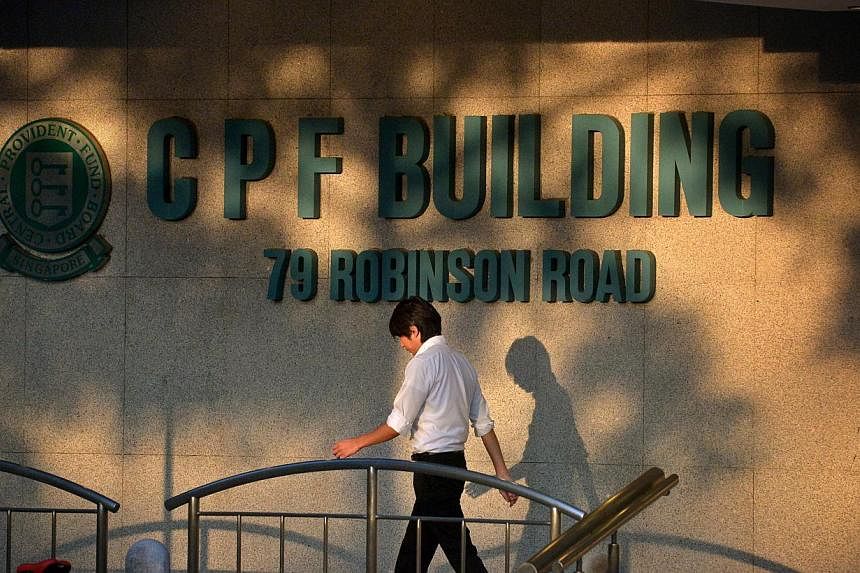The Central Provident Fund is at the forefront of most conversations these days, whether in the media, at the coffeeshop or amongst the men and women in the streets - and rightly so.
In 2011, it was reported by the CPF Board that among the active members who reached 55 years old in 2010, about 40.7% met the required Minimum Sum (MS) requirement. The implication is that those who do not meet the MS will not have sufficient means to meet their basic needs upon retirement, unless they have alternative sources of wealth. The CPF Advisory Panel recommendations announced on 4 February 2015 offer three possible options - Basic Retirement Sum (BRS), Full Retirement Sum (FRS) and Enhanced Retirement Sum (ERS) - all of which will provide greater flexibility for CPF members during their working life. However, the downside of the BRS is that it may lead some to believe that it is all they require for their retirement needs.
At age 55, the $80,500 in the BRS will only yield a monthly payout of $650 to $700 when one begins to draw on it at age 65. It is debatable -with the escalating costs of living - whether this regular monthly payout is sufficient to be the primary source of regular income upon retirement. Chances are that additional sources of income other than CPF will be needed to supplement the amount.
Perhaps the writing is already on the wall - maybe it is time to look beyond CPF for our retirement needs.
The World Bank has identified five Pillars of Pension:
a) Pillar Zero, which comprises non-contributory social assistance financed by the state, fiscal conditions permitting
b) Pillar One, which is mandatory with contributions linked to earnings and has as its objective that of replacing some portion of lifetime pre-retirement income (namely our CPF)
c) Pillar Two, a mandatory defined contribution plan with independent investment management (any employer-sponsored scheme with both employer and employee contributions)
d) Pillar Three, voluntary personal savings and insurance (namely Supplementary Retirement Schemes (SRS), life insurance policies, etc.)
e) Pillar Four, informal support (e.g. family support), other formal social programs (e.g. healthcare and/or housing), and other individual financial and non-financial assets (e.g. home ownership and reverse mortgage where available)
The basic tenet of any sound financial plan is to avoid putting all your golden-year eggs into one retirement basket. Following this train of pecuniary logic, it behoves us to be judicious with our investments and savings and not bank entirely on our CPF to underwrite all retirement needs. A detailed assessment of the above recommendations indicates that Pillar Two in funding our retirement needs is lacking essential parts.
HELPING COMPANIES SET UP RETIREMENT SAVINGS SCHEMES
Could our Government do more to provide incentives to companies to set up employer-sponsored schemes which will allow for employer contributions toward employees' retirement funding programmes?
Presently, we do have some rules and regulations in our tax code, under Section 5 of the Income Tax Act, for employer-sponsored schemes (also known as Section 5 schemes). These schemes have to be set up in a trust arrangement where the trust deed and rules of the scheme must be approved by the Inland Revenue Authority of Singapore (IRAS). There are currently about 23 Section 5 schemes approved by IRAS.
These Section 5 schemes are strictly employer-contribution only, and employers' contributions to the scheme are tax-deductible.
Other restrictions of Section 5 schemes include the fact that all retirement benefits become taxable upon retirement, and leaving-service benefits will have to be cashed out of the scheme immediately upon the employee's leaving the employment of the scheme-sponsoring company. Leaving service or retirement benefits are also subject to an overall defined benefit ceiling.
Most importantly, the steps needed to establish a Section 5 scheme are complex - getting one of these schemes up and running - including getting IRAS's approval - takes time (typically anytime between six months and a year). It is therefore not surprising that the take-up rate for these retirement policies in Singapore is dismal, to say the least.
Some suggestions to encourage more employers to set up Section 5 schemes for their workforce by amending and simplifying the guidelines for this scheme are as follows:
1. Align the tax treatment of benefit payouts with that for SRS - 50 percent tax-free and 50 percent taxable;
2. Allow part or all of the retirement benefits to be staggered over a span of 10 years rather than the current five years (like SRS);
3. Allow employee contributions (pre-tax or post-tax) into a Section 5 scheme so that employees can take advantage of the collective investment/savings vehicle that the scheme provides;
4. Allow benefits (on a post-tax basis) to be deferred until retirement age even when the employee leaves the employment of the scheme-sponsoring company, or alternatively, allow the benefits to be transferred into an SRS account or into CPF so that CPF members can take advantage of the Enhanced Retirement Sum recommended by the CPF Advisory Panel;
5. Simplify conditions required for Section 5 schemes and the approval process so that it may encourage the take-up rate amongst employers and employees alike.
By fine-tuning Section 5's parameters and processes, it will become easier for individuals to include it as a component of their retirement basket, thereby reinforcing our Pillar Two. From the employers' perspective, it will also help reduce workforce turnover and encourage retention - a win-win scenario for both employers and employees.


